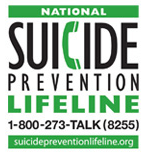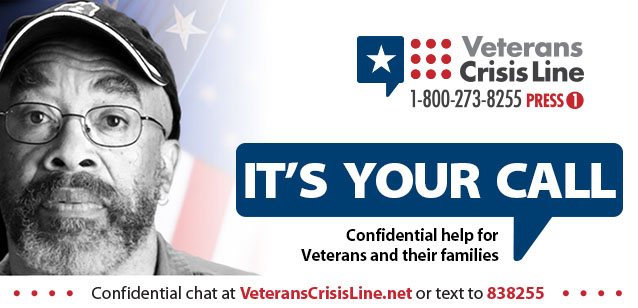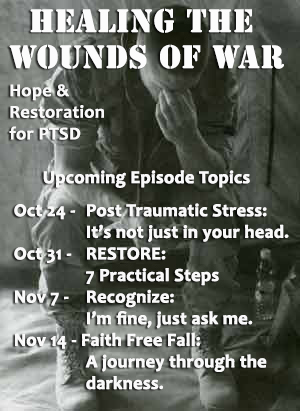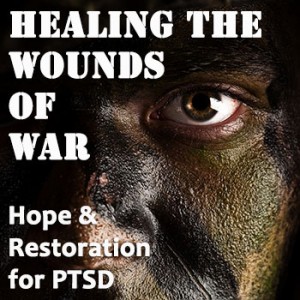Podcast: Play in new window | Download
I am David Fell, your host for this podcast where we are building a community Hope and Restoration for all those dealing the Stress, Anxiety, Post Traumatic Stress and much more.
Each week we seek to inform, educate and yes, perhaps even entertain as we learn together how to live lives of victory!
In today’s episode we will:
- Discuss ways to get connected to the community
- Give an overview of the RESTORE process
- Talk about a potentially exciting treatment for the most server PTSD
So how do get connected?
> Leave a comment or a voice message Name, where you are calling from and a brief message or question. Please only question per message, but as many questions as you like.
On to our main topic of our show…a 10,000 foot overview of the RESTORE process…
Recognize: Issue (problem)/Opportunity
– What is not “right”, going well, in my body, thoughts, attitude, relationships, etc…?
Evaluate: Impact and Sources
- Don’t get caught up in this part of the process!
- Sometime our situations are complex and need qualified outside assistance to work through. There are many qualified counselors/therapists skilled in different tried and proven techniques.
- The purpose is not to answer every possible question or understand every aspect of the issue. Rather it is to help identify something for us to do, a goal we can set and achieve.
Example 1: Marc, 70 with High Blood Pressure….
Example 2: High anxiety in large crowds
START
– Set goal(s)
- measurable, obtainable!
- Let others help identify and define the goal; but they must be YOUR goals! You have to take ownership of the process.
– Tool: Gather tools and resources need to accomplish goal
> Friends, equipment, books (or other training material), doctor, therapist, coach…
– Action Plan: Goal and Tools in a concrete plan
> Who, What, When, Where and How
– Run with it!!! Execute the plan with confidence.
– Test: Is the plan leading me toward the goal, is this goal leading me toward the major objective.
Tune: Adjust and modify as necessary to accomplish goal
Overcome: Obstacles will arise; but they can be overcome. When we Recognize an obstacle we can Evaluate it and START to take action to overcome.
Reach Out to others: A key ingredient!
Evolve: Change and grow in Post-Traumatic Strength and Success
Science update:
NOTE: The following links are not endorsed by this podcast of the Hope and Restoration Team. All medical options should be done in consultation with your licensed medical provider.
Stellate Ganglion Block
Dr. Eugene Lipov
As of 2012 Livop has treated 65 people with variable success. Still under investigation.
Links to interesting articles and news reports….
Thank you for listening! Let a friend know. We would appreciate it greatly if you would give us a 5 star rating in the ITunes store and share the good news.







